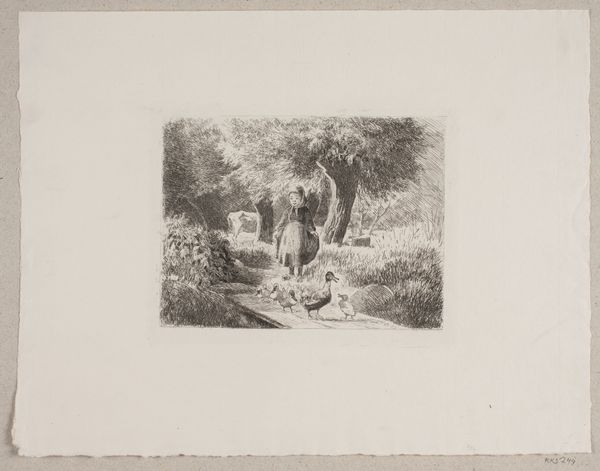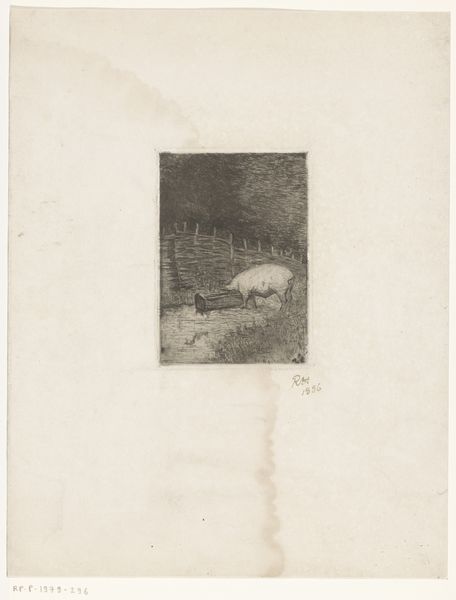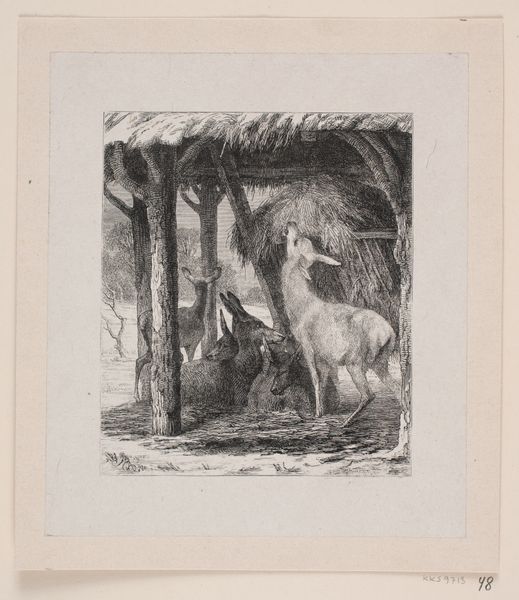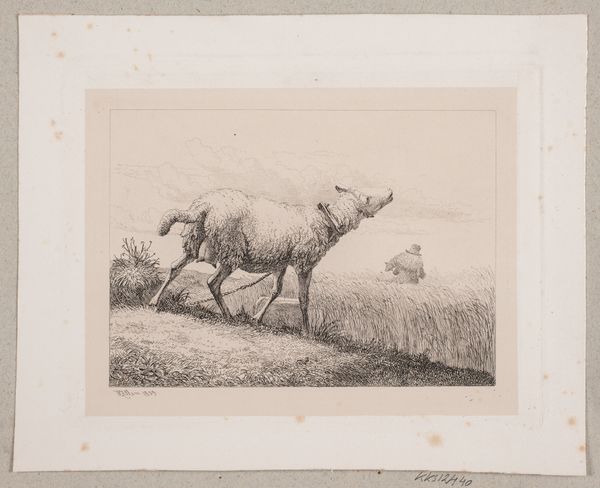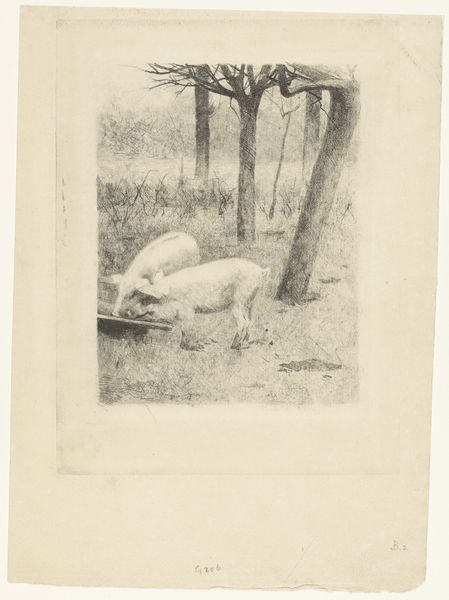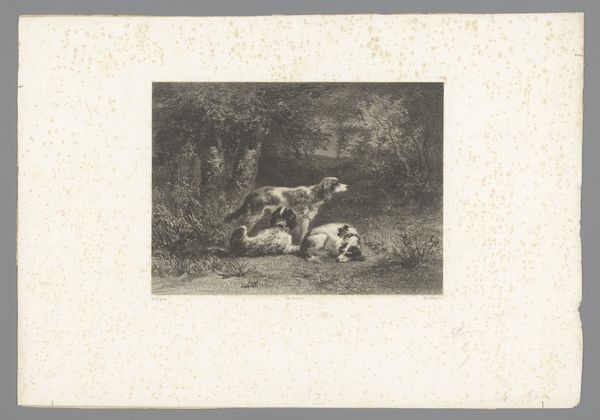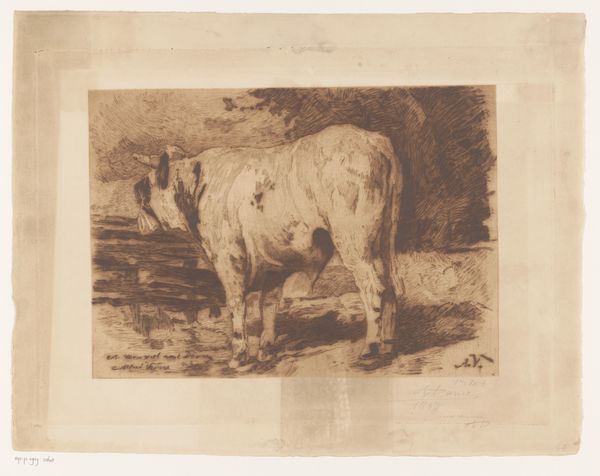
drawing, print, etching, pencil
#
drawing
# print
#
etching
#
landscape
#
pencil
#
horse
#
genre-painting
#
realism
Dimensions: Sheet: 6 11/16 × 8 1/4 in. (17 × 21 cm) Plate: 4 15/16 × 6 11/16 in. (12.5 × 17 cm)
Copyright: Public Domain
Curator: "Horse Under a Tree Branch," created in 1846 by Charles Jacque. The medium is etching, rendered with pencil. It is currently housed here at the Metropolitan Museum of Art. Editor: My first impression is of a very intimate and quiet moment, almost melancholic, dominated by this incredible density of lines in the tree canopy. Curator: The etching captures a seemingly mundane, genre-painting moment—a horse seeking shade under a tree. But, consider the social context: the 19th-century art world saw a rise in Realism, shifting focus to the everyday lives of rural communities. Jacque, as part of this movement, elevates this scene to something worthy of artistic attention. Editor: Absolutely. The materiality speaks volumes too. Look closely—the density of the etched lines gives the leaves almost a tangible weight. The choice of etching allows for this fine detail, almost mimicking the texture of the horse’s coat. This attention to the physical world connects directly to labor, doesn't it? To the horse as a working animal, resting, to the etcher’s own labor of building this image line by line. Curator: Indeed. And notice the presence of figures near the horse. It brings up interesting questions. Are they also resting laborers? Are they interacting with the animal or is the composition simply trying to highlight the animal in nature? In the time frame, horses would not simply be wandering in nature without human interaction. This is, most likely, to emphasize that genre of painting which seeks to find dignity in labor and animal care. Editor: The etching process itself emphasizes this slower pace. The care, time, and labor involved in the plate making. Think how this contrasts with the rapid industrialization occurring at the time. This print becomes not just a representation, but a testament to pre-industrial modes of production and labor. Curator: It definitely reflects the politics of imagery in the period. By focusing on the daily lives of common folk, artists like Jacque implicitly legitimized their place in the cultural and social narrative. The artwork gives dignity to ordinary subjects who usually went unnoticed. Editor: Yes. A dignity meticulously crafted through process, ink, and paper, raising questions about what is deemed worthy of our attention. Curator: A vital discussion—Jacque invites viewers to see beyond the surface and see significance in the overlooked and perhaps undervalued parts of life. Editor: Indeed. By centering production, it’s clear how the artwork mirrors, but also actively participates in, the social and material landscape of its time.
Comments
No comments
Be the first to comment and join the conversation on the ultimate creative platform.

